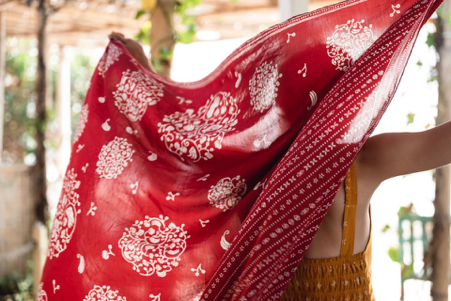As consumer waste issues have become more mainstream in recent years, consumers in Southeast Asia have become more critical of the products they wear and use. In response to a new consumer paradigm, big, international brands in the fashion industry in this region have adapted by working with institutions and organizations to reduce or recycle their waste. Clearly, protecting natural resources and reducing greenhouse emissions become obligatory corporate policies, but other avenues of creative production are also explored. Cole Haan, for example, the American brand with over 300 stores worldwide, highlights its innovations in creating more sustainable products. Whether in Vietnam or Indonesia, Cole Haan introduces higher percentages of sustainable materials by concentrating on low-impact design and engineering, called Grand.36Ø Design & Engineering System, while using responsible or recycled materials to minimize waste wherever possible.
In parallel with this development, young and environmentally-conscious brands in Southeast Asia spring up to address renewed needs. In Indonesia and Thailand, for example, entrepreneurs with a more sustainable notion of products have turned to repurposing or recycling as an essential factor in their businesses. Pushing creativity to a whole new level, these brands strive to come up with well-designed quality products that leave as little waste as possible.

Source: Sejauh Mata Memandang
Sejauh Mata Memandang, for example, is an Indonesian high fashion clothing brand, founded by the esteemed stylist Chitra Subyakto, with its stated mission to be “responsible… in doing our business by collaborating with various organisations who share the same purposes in reducing textile waste….”[1] It has three categories of products: Baru, which uses responsible and eco-friendly design, materials, and production processes, Daur, which brings back to life leftover materials, and Baur, which gives new life to textile waste and implements a concept of circular fashion.
Another Indonesian brand that first started as a way of upcycling milk cartons is Popsiklus, a small-medium craft enterprise that creates bags, wallets, notebooks, etc. Believing that milk cartons are made of well-structured, solid substances, since 2009 Popsiklus have been collecting these used cartons, working with cafes to secure materials and employing five workers to turn waste into lovely products that in 2022 won the prestigious Inacraft Awards.
Similar awareness of the use of waste can also be seen in Thailand, where Moreloop is “dedicated to maximizing the value of surplus fabrics and minimizing waste in the fashion industry.”[2] Not only selling high-quality surplus fabrics that otherwise go to waste, Moreloop also transforms these into new products in an effort to contribute to the circular economy. To make sure that these fabrics don’t end up in landfill, Moreloop sells them to fashion designers and small-medium enterprises, where repurposing can be done. This effort has earned them the 2021 SEED Low Carbon Award.
Marionsiam is another Thai brand that takes advantage of leftover clothes from textile factories to create batiktulis (hand drawn). Incorporating designs that draw inspiration from the era of King Rama V, Marionsiam also uses leftover candles from temples to write the batik’s patterns and motifs. And supported by traditional techniques known for a long time as being environmentally friendly, this brand founded in 2019 has been promoting handicrafts for modern use, winning the Creative Textiles Award in 2020.
Meanwhile, the Vietnamese, of course, are also no strangers to practices of sustainability although the term “sustainable” is only recently associated with fashion there. The brand called TimTay, for example, was launched in 2014 as an enterprise inspired by traditional regional craftsmanship all over the country, using natural fabrics because the founders, Hoang Tu and Hoang Anh, have cared about the environment from early on. Creating items of clothing that are “light, comfortable, and versatile”, they even use leftovers to produce accessories like bags, earrings, and bracelets.
Today these brands, along with many others, have started to make a change in how ordinary consumers see wearables and lifestyle products. Amid calls for greater change in the face of the real consequences of what we consume carelessly on a global scale, entrepreneurs step up to address environmental concerns while facilitating consumers to participate in small changes. It is a breath of fresh air in terms of both creativity and sustainability.
[1] “Our Story”, https://sejauh.com/pages/about-us.
[2] “Welcome to moreloop!”, https://moreloop.ws/.


